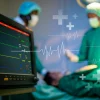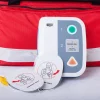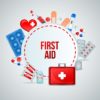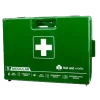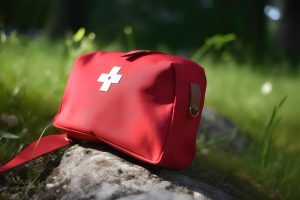
Recent Post
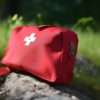 Could You Recognise the Signs That Someone Needs a Defibrillator?
Could You Recognise the Signs That Someone Needs a Defibrillator?
September 12, 2023
In our modern world, having life-saving knowledge at our fingertips is nothing short of a boon. And while there’s no substitute for professional medical help, recognising when someone might be in dire need of a defibrillator can, in fact, make all the difference.
Understanding What a Defibrillator Does
At its core, a defibrillator is a remarkable device. It sends an electrical shock to the heart, potentially resetting irregular heart rhythms and restoring a normal heartbeat. Automated External Defibrillators (AEDs), which are readily available in many public spaces, can be used even by those without medical training. They come equipped with voice-guided instructions, ensuring they’re user-friendly.
Why Recognising the Need is Crucial
Time is of the essence. Every second counts when someone is facing a heart-related emergency. By knowing what to look for and acting promptly, you might just increase the odds of survival. Heart-related emergencies require swift decisions, and understanding when to use a defibrillator is key.
Common Signs Someone Might Need a Defibrillator
Sudden Collapse: One moment they’re fine, and the next they’ve hit the ground. An unexpected fall can be a red flag.
No Pulse or Breathing: If someone appears lifeless, it’s essential to check their vital signs immediately. No heartbeat? Breathing seems off? These are tell-tale signs.
Gasping or Gurgling: Keep an ear out for unusual sounds. If someone’s breathing sounds off-kilter, you might be dealing with a medical emergency.
Loss of Responsiveness: Snap your fingers or call out. If there’s no reaction, it could be a cry for help.
Situational Awareness: Understanding the Surroundings
Knowing your surroundings can save a life. Familiarising yourself with potential AED locations in your frequent haunts can make all the difference. From malls and airports to sports venues, it’s vital to be prepared.
The Right Way to Use a Defibrillator: A Brief Guide
Using an AED might seem daunting, but trust me, it’s more straightforward than you think. Follow these steps:
- Ensure the person is on a firm surface.
- Turn on the AED and listen to the voice-guided prompts.
- Expose the chest and place the electrode pads as directed.
- Stand clear and allow the AED to analyse the heart’s rhythm.
- If instructed, press the shock button.
Remember, the device will guide you every step of the way.
The Role of CPR: Complementing Defibrillation
Though an AED can be a game-changer, don’t underestimate the power of good old CPR. Giving chest compressions ensures the flow of oxygen-rich blood, helping keep vital organs alive. In situations where a defibrillator isn’t immediately available, performing CPR can buy that ever-so-crucial time.
How Public Access to AEDs is Being Promoted
Public health initiatives around the globe have been working tirelessly to ensure AEDs are easily accessible. From workshops to community training sessions, the emphasis is on widespread awareness and hands-on familiarity. The goal? Empower as many people as possible to be potential lifesavers.
Now, you might be wondering, “Where can I get one of these life-saving devices?” At the forefront of this noble cause is Priority First Aid. As a leading defibrillator seller, Priority First Aid offers online sales to customers across the nation, ensuring everyone has a fighting chance.
Make the right choice. Be informed, be prepared, and most importantly, be ready to act. Lives depend on it.

